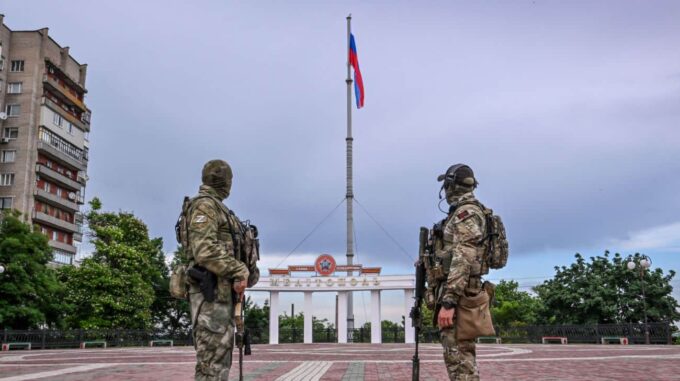Journalists have identified the names of those responsible for the persecution of Ukrainian churches in the temporarily occupied areas of Zaporizhzhia region, particularly in Melitopol, by uncovering collaborators involved in religious repression

Investigators from The Kyiv Independent, in their new documentary work "There Will Be No God Except Theirs," conducted an in-depth investigation answering the questions: who and how are using the administrative machinery to suppress Ukrainian religious communities in the occupied territories. As part of the investigation, the journalists contacted a person who currently heads the "Department for Work with Religious Organizations" within the temporary occupation administration of Zaporizhzhia region, functioning in Melitopol. His name is Artem Sharlay — a resident of Zaporizhzhia known for his pro-Russian views since the early 2000s. This individual has become one of the key figures in the system of repression against Ukrainian churches operating in the city. Based on obtained documents and conversations with experts, Sharlay previously actively participated in anti-Ukrainian actions even before the revolutionary events of 2014, including being a co-founder of the pro-Russian movement "Anti-Maidan." During the Russo-Ukrainian war, he joined the illegal formation "DNR," operating in the occupied territories of Donbas. After a brief absence from the public space, he reappeared in 2022 with the task of deepening repression and controlling the religious sector of the occupied regions. In conversations with journalists, Sharlay named his subordinates — Andriy Zinchenko, Vyacheslav Lytvynenko, and Oleksandr Danylova. According to sources, the last, even before the annexation of Crimea, held mid-level positions within Ukrainian administrative structures and is known for his pro-Russian orientation. After the start of the large-scale invasion, he moved to Melitopol, where he now heads the Department of Internal Policy within the occupation administration. Furthermore, the investigation mentions former Verkhovna Rada deputy Yevhen Balytskyi, who, having switched sides to the Russian invaders, signed the order banning the activity of Ukrainian churches in the region. According to these documents, all movable and immovable church property in Melitopol and surrounding towns and villages was confiscated. Balytskyi, in his role as head of the administration, coordinates these punitive measures directed against religious communities. Many of the churches currently controlled by the occupation administration are used by Russian military personnel and officials as official premises for occupation authorities. Notably, structural subdivisions of the occupation government are situated there, including the "Ministry of Youth and Sports of Zaporizhzhia Region" in the building of the former "New Generation" church, the "Ministry of Culture" in the church "Grace," and the department of the "Ministry of Internal Affairs" in the "Word of Life" temple. This indicates a systemic approach by the occupiers to suppress Ukrainian religious communities, utilizing religious buildings for control and administrative purposes. These actions are part of a broader program of repression aimed at eradicating Ukrainian identity and preventing the re-establishment of Ukrainian churches in the occupied territories. Suppressing religious communities is a strategic element of the Russian occupiers’ policy, employing administrative and forceful intimidation to subjugate the population. This investigative data not only confirm the involvement of local collaborators in the gravest crimes against Ukraine but also demonstrate the scale and systemic nature of religious repression in the region. For the Ukrainian community, this is another argument in the fight for the return of their territories and for preserving freedom of worship, which is especially severely tested during occupation.

